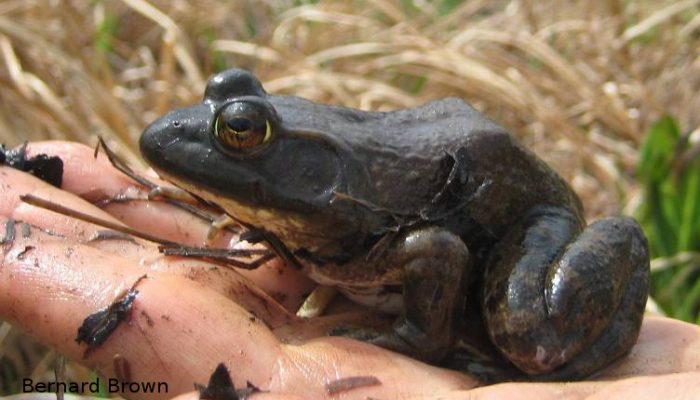Guest post by Bernard S. Brown, Philadelphia County Coordinator, PA Amphibian And Reptile Survey. Edited by: Amy Hopf.
The sounds and sights of reptiles and amphibians are a sign that summer is here. The deep roars of bullfrogs croak from the banks of Philadelphia’s ponds and creeks, while green frogs call with a “plunk,” like loose banjo strings.
Out in the water, all types of turtles crowd onto logs and rocks to catch some sun, such as red-eared sliders, painted turtles, and red-bellied turtles. The heat of a summer day is a good time to sit and relax, and the turtles agree.
Most reptile and amphibian activity of the summer shifts to cooler hours of the evening or dawn and dusk. If you’d like to find reptiles and amphibians this summer, focus your efforts early in the morning or as the heat is breaking at the end of the day. A lot of critters hide under boards, rocks, or logs, where there is more moisture.
A summer rainstorm will bring out the local frogs, toads, and the snakes that try to eat them. Box turtles also love a summer shower– a great time to gobble up worms and wallow around in a warm puddle.
Some critters seem to take the summer off. For example, redback salamanders head underground to escape the hotter, drier weather. You won’t see very many of them again until the heat breaks in autumn.
Babies start to appear towards the end of the summer, because most of our local creatures breed in the spring. Adult brown snakes, already small at about a foot long, welcome their teeny newborns. Young garter snakes hunt for worms. Most toadlets and froglets are no longer tadpoles and hop out of the water. Baby turtles reverse that trip, digging out of their nests and scrambling down to the water. Even snapping turtles are adorable at this age.
If you spot reptiles or amphibians you do find this summer, take a quick photo and report it to the Pennsylvania Amphibian and Reptile Survey (PARS). Your observation will help future researchers and conservationists interested in our local critters!




